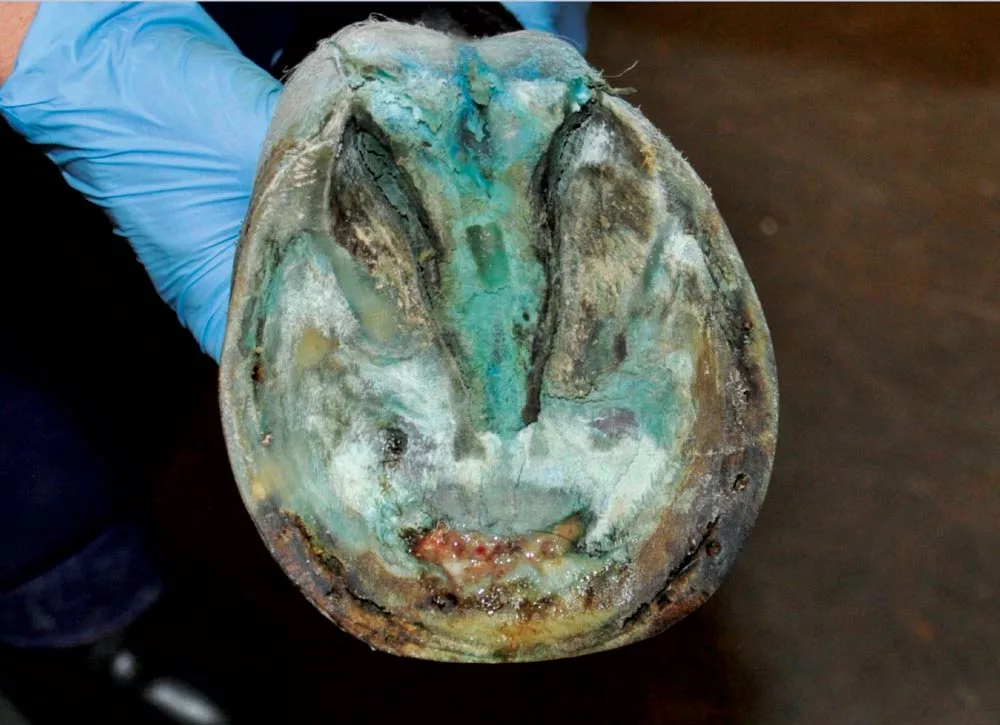American Farriers Journal
American Farriers Journal is the “hands-on” magazine for professional farriers, equine veterinarians and horse care product and service buyers.

Separation of laminae from the hoof wall allows room for the coffin bone to rotate. This can lead to the coffin bone penetrating the sole.
Laminitis likely can’t be cured by the time the intricate structures of the hoof degrade, it’s impossible to reverse the damage. That means that prevention, early detection and stopping progression of the disease are critical.
Responding to the slightest changes only apparent on radiographs should be acted upon, says Andrew van Eps, BVCS, Ph.D., associate professor of musculoskeletal research at the University of Pennsylvania School of Veterinary Medicine, New Bolton Center.
“A roughening of the dorsal aspect of P3 on X-ray and a change in the morphology of the tip of P3, where it turns into more like a little ski jump, these are some of the subtle changes that you see even before you see rotation,” he said.
Management practices and medication in addition to corrective shoeing play an important role in halting the progression of laminitis. The good news is that laminitis is a priority among researchers. Current studies offer promise through the appropriate implementations of therapies specifically aimed at addressing the underlying cause in different forms of laminitis.
In human research, studies show that lowering a person’s body temperature by even just 5-10 degrees below normal is effective in reducing inflammation and…